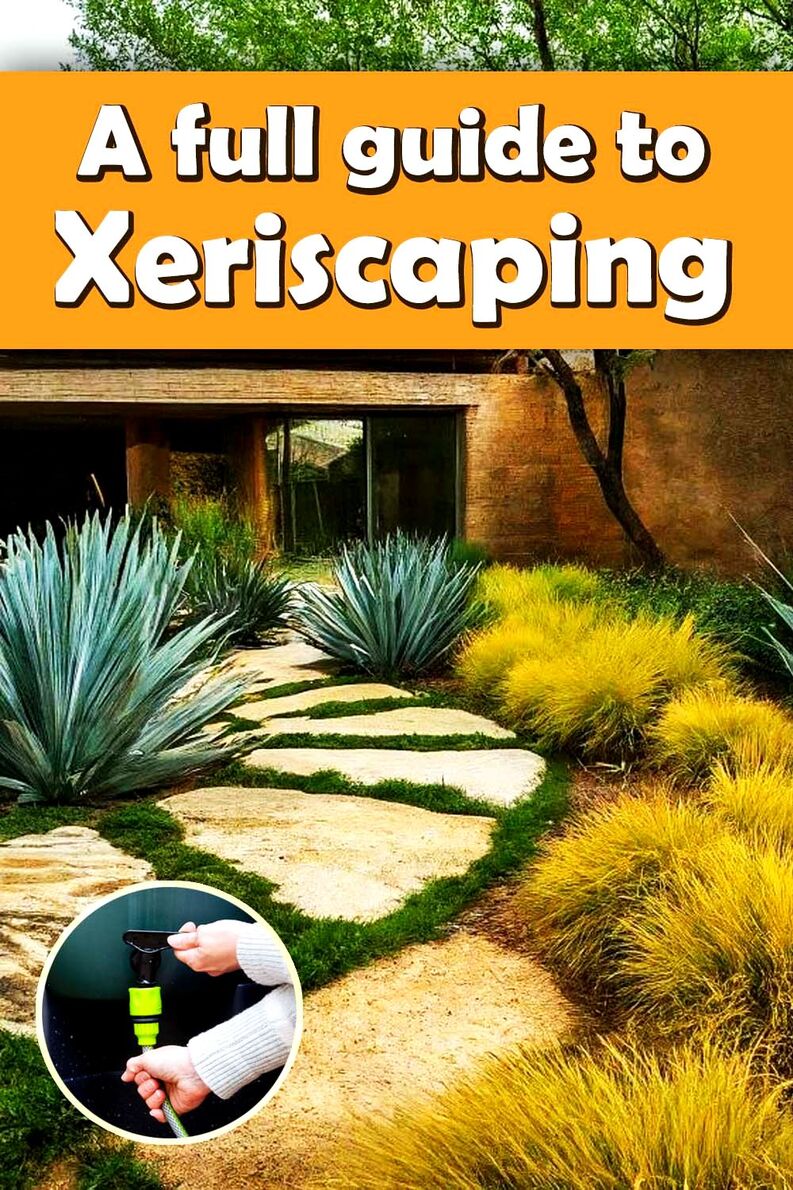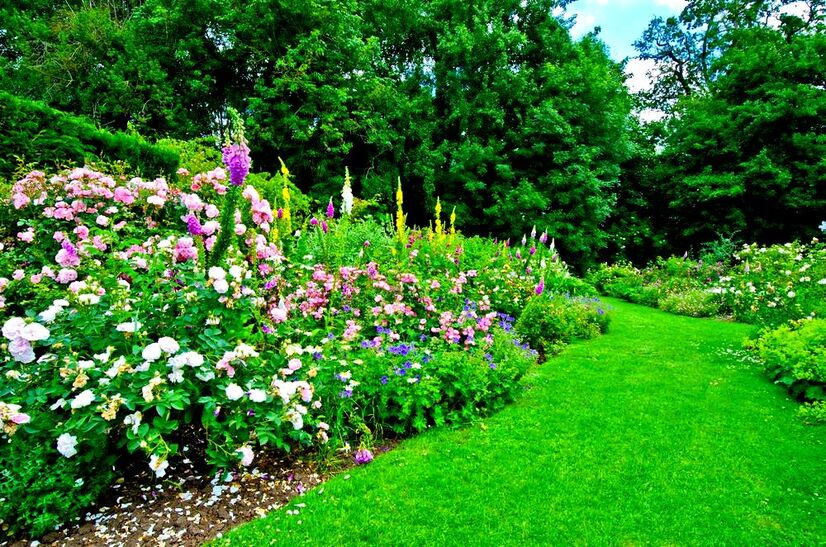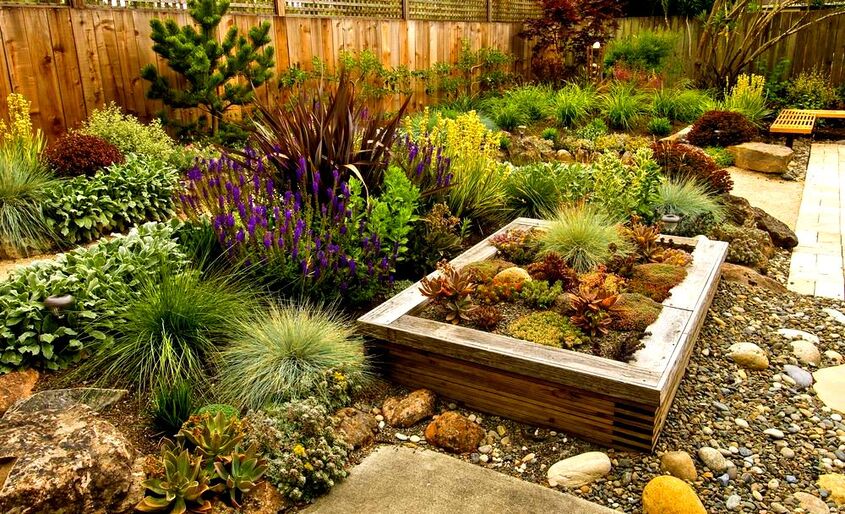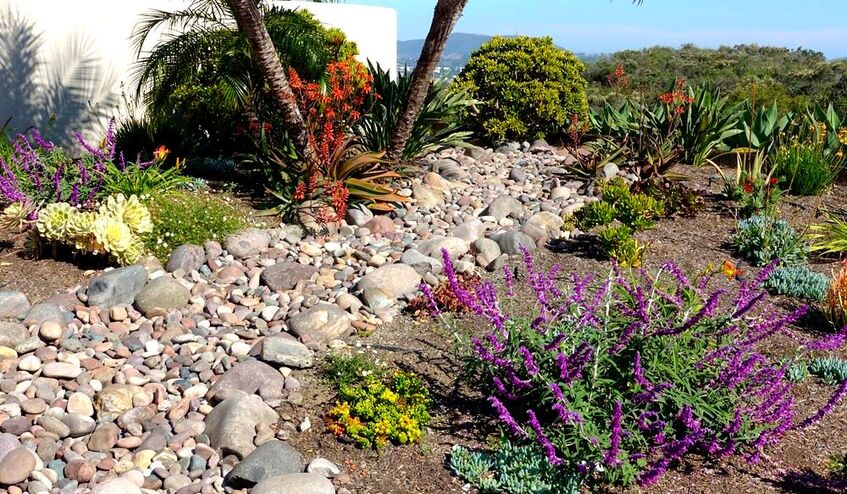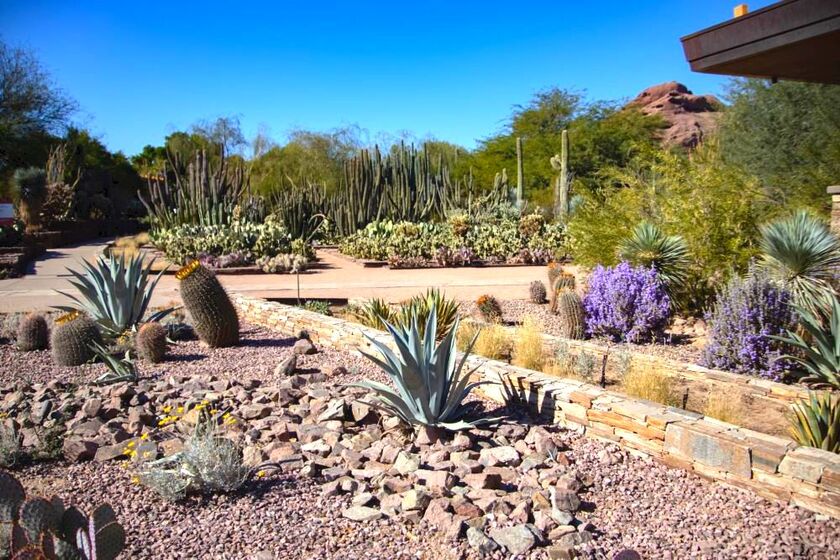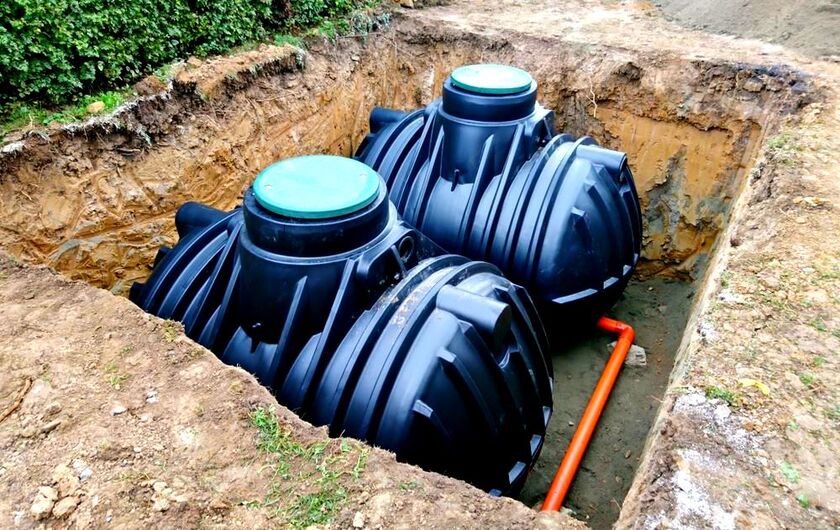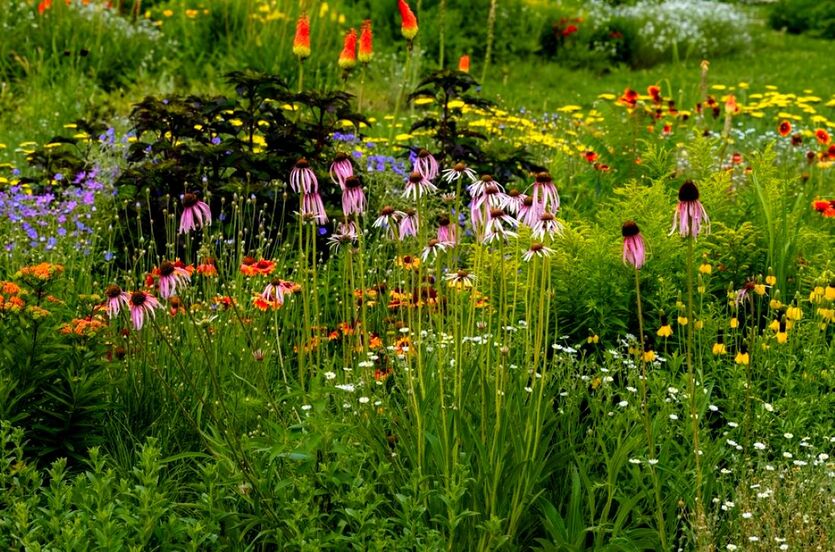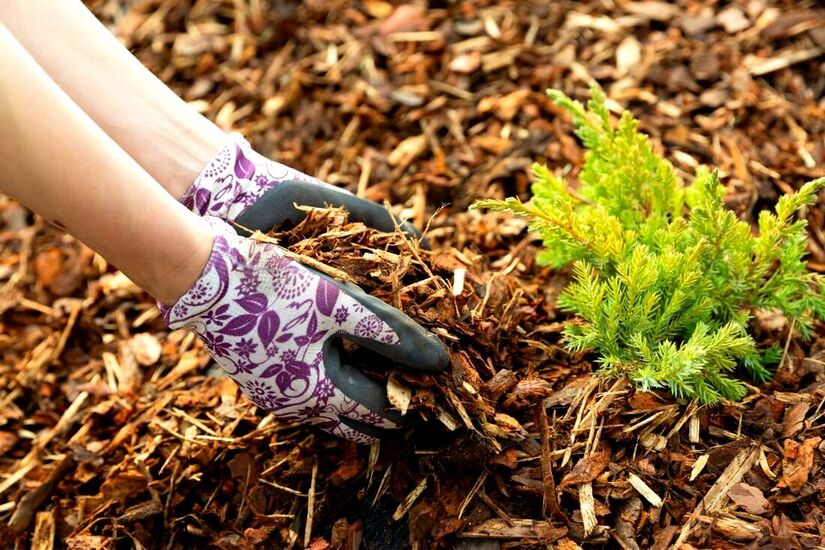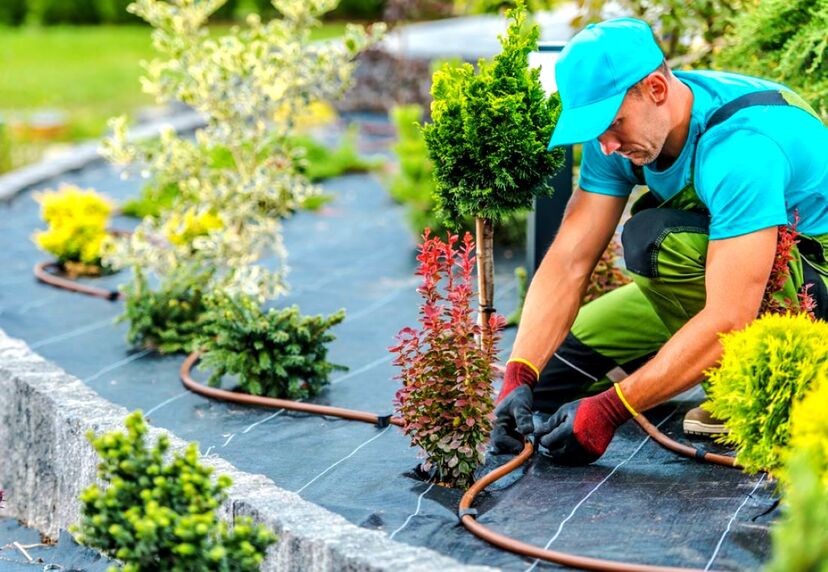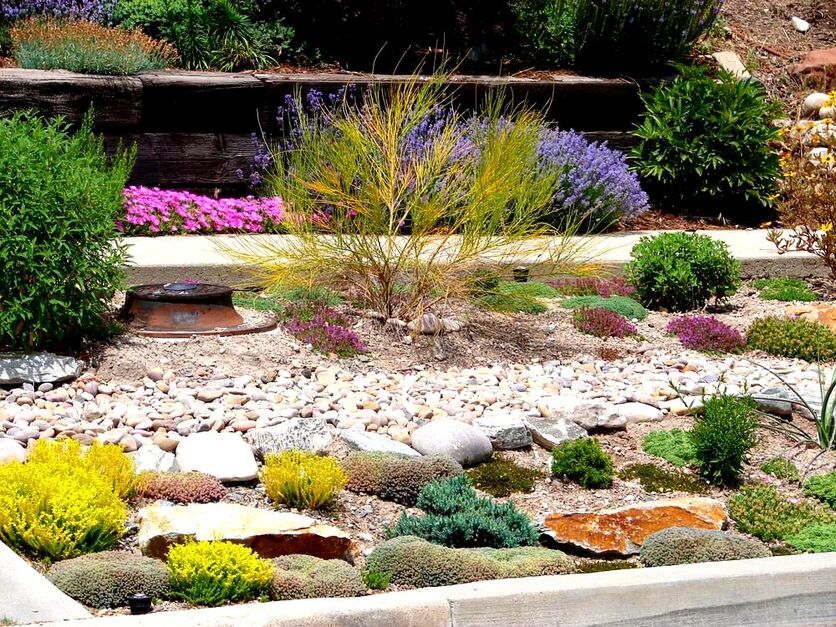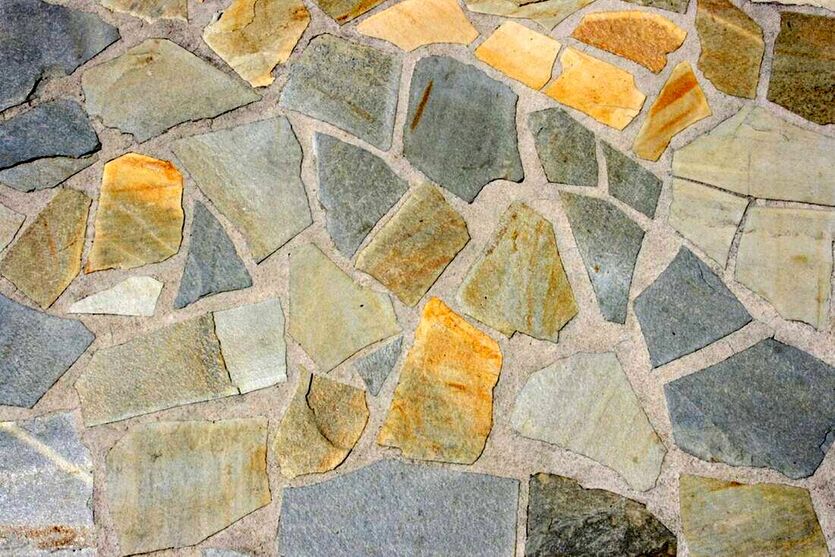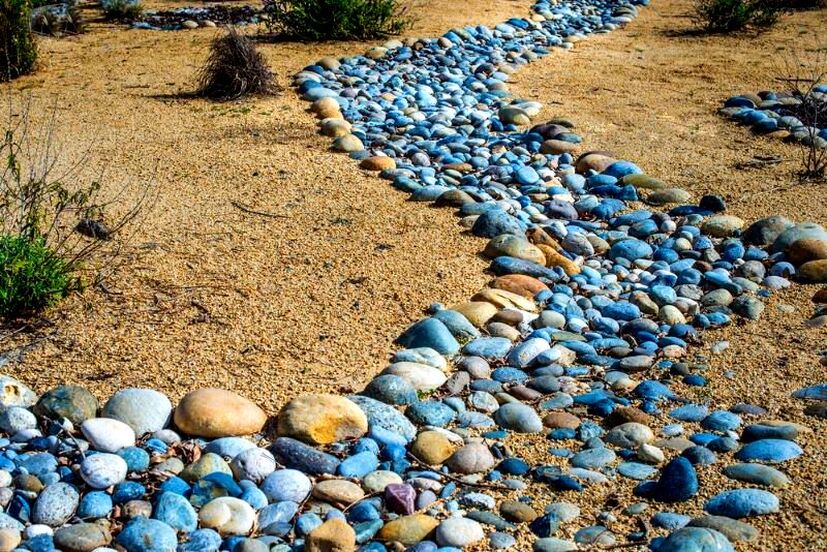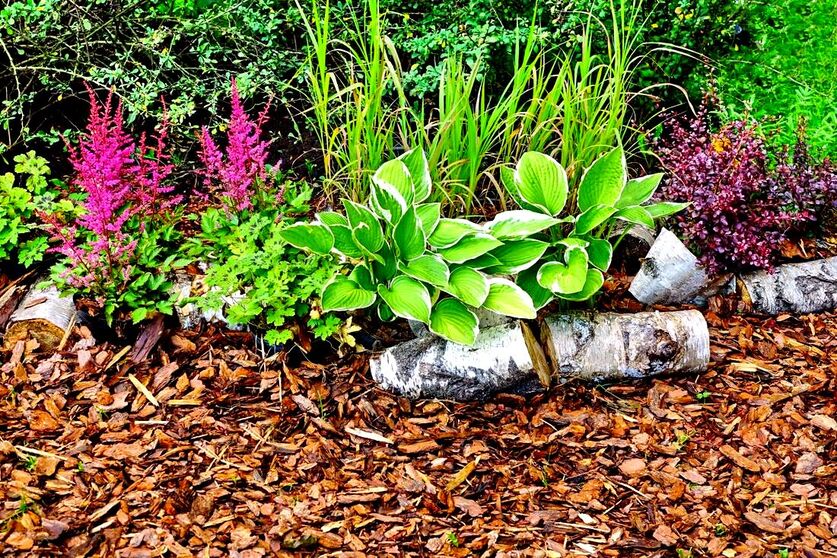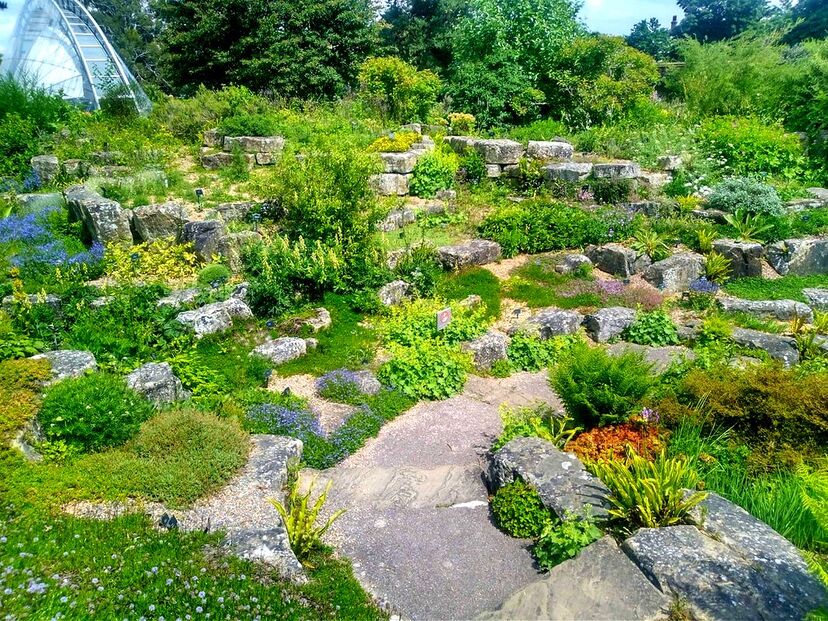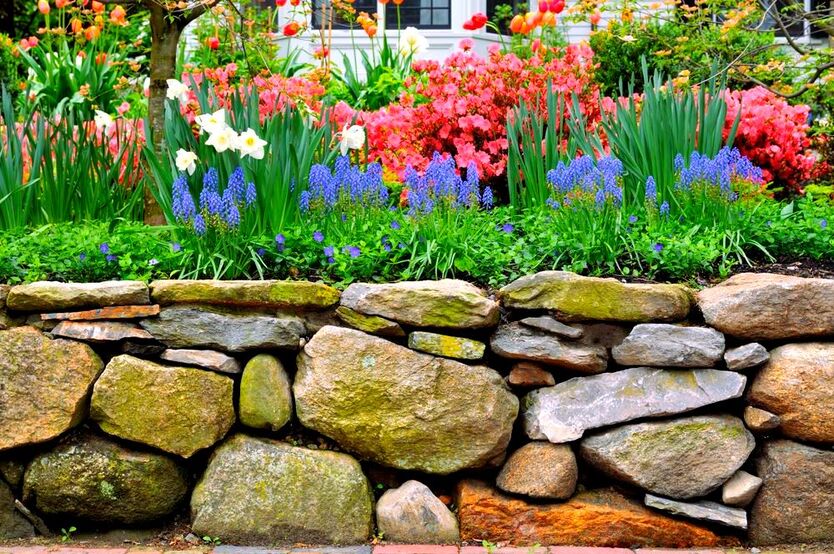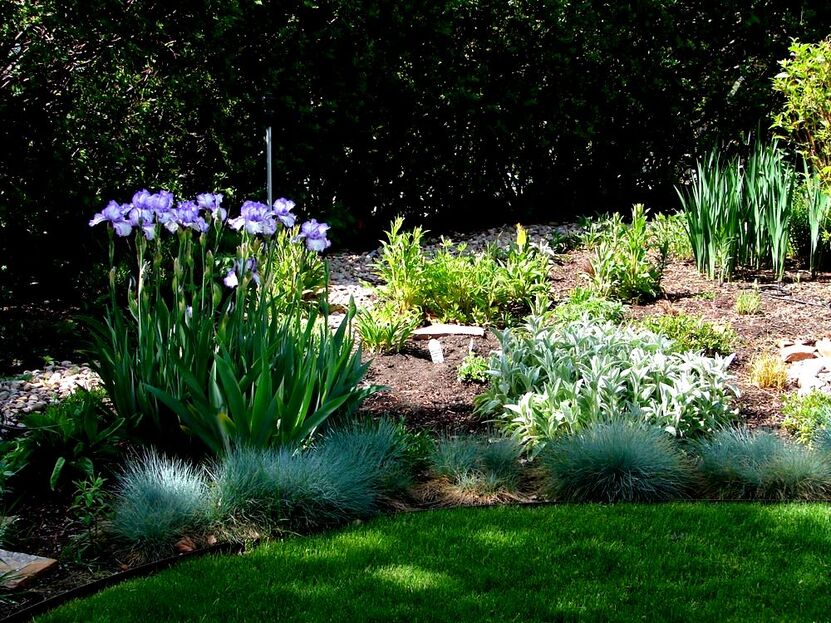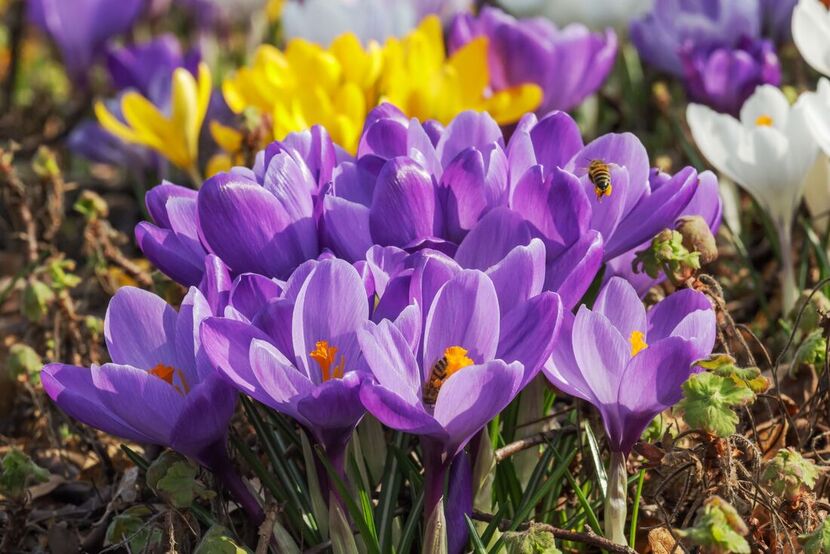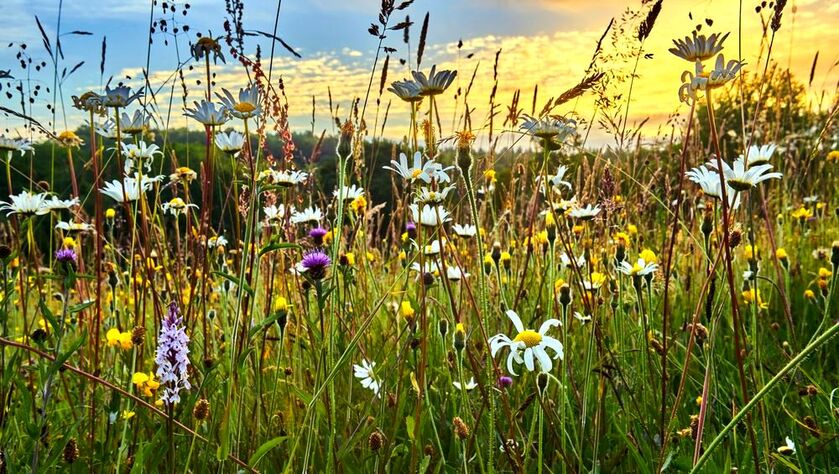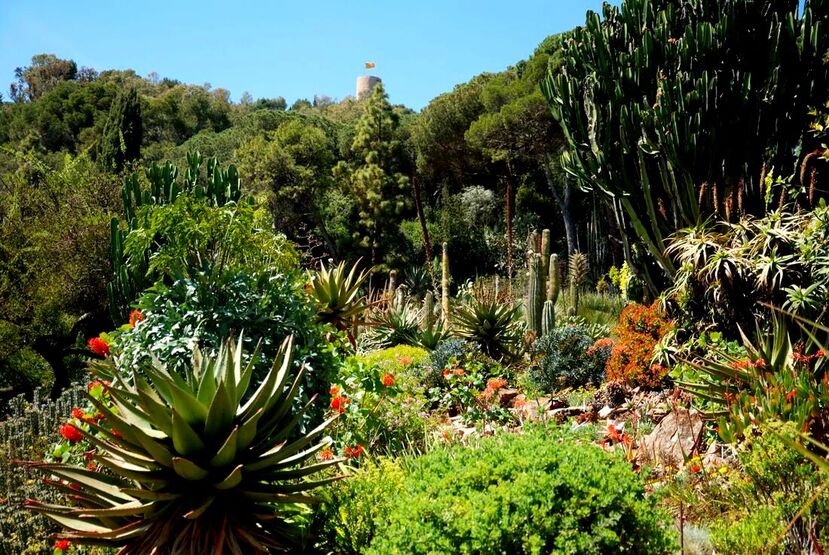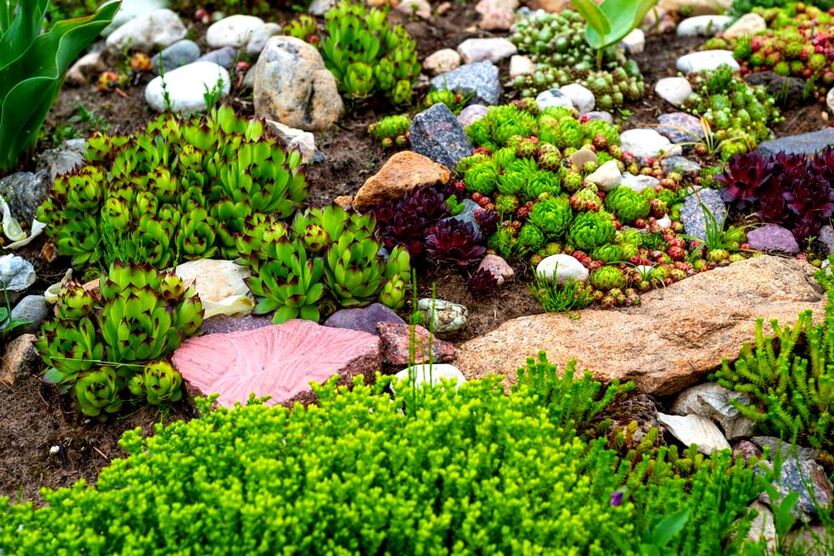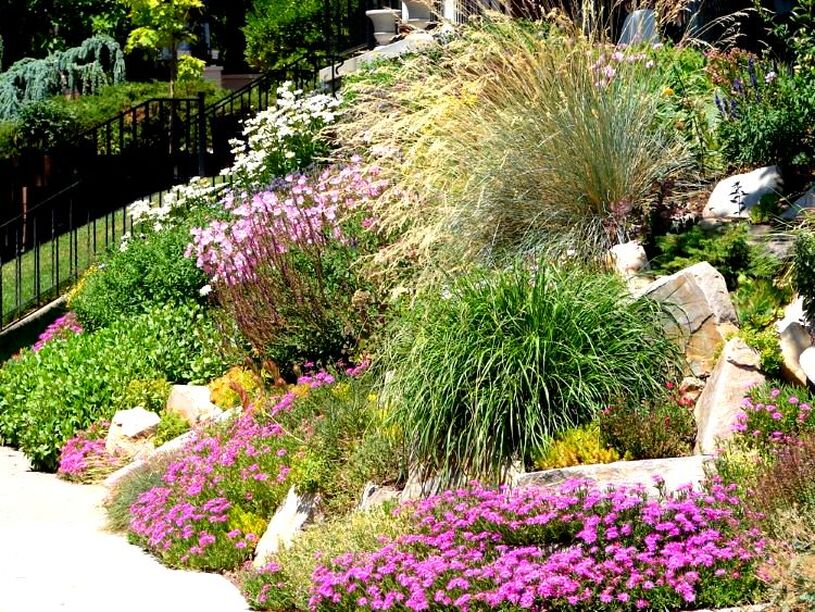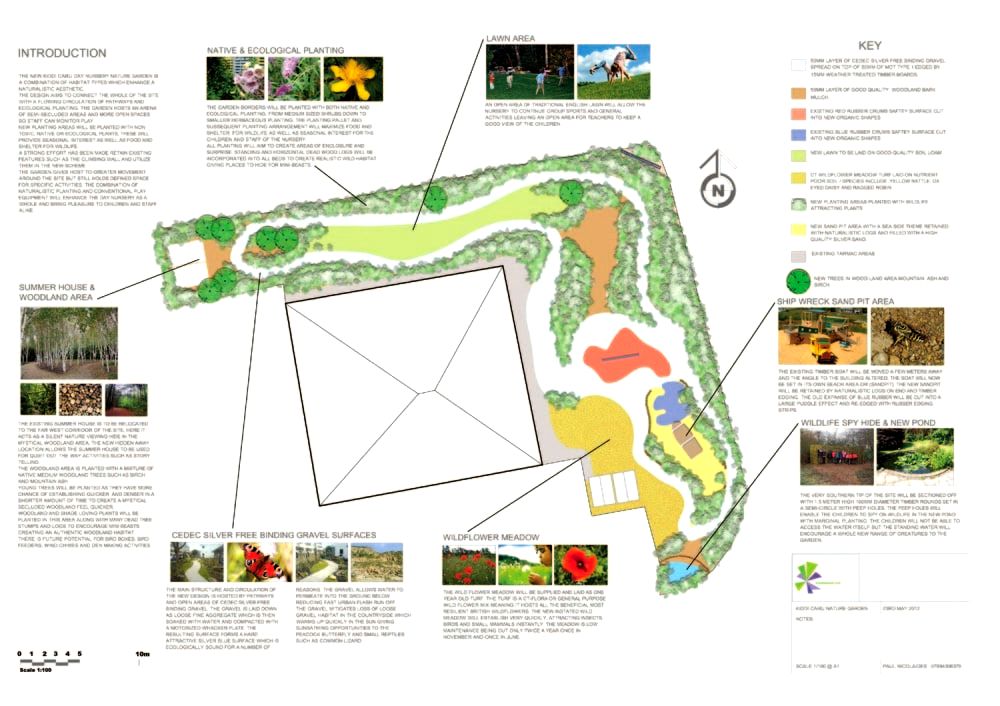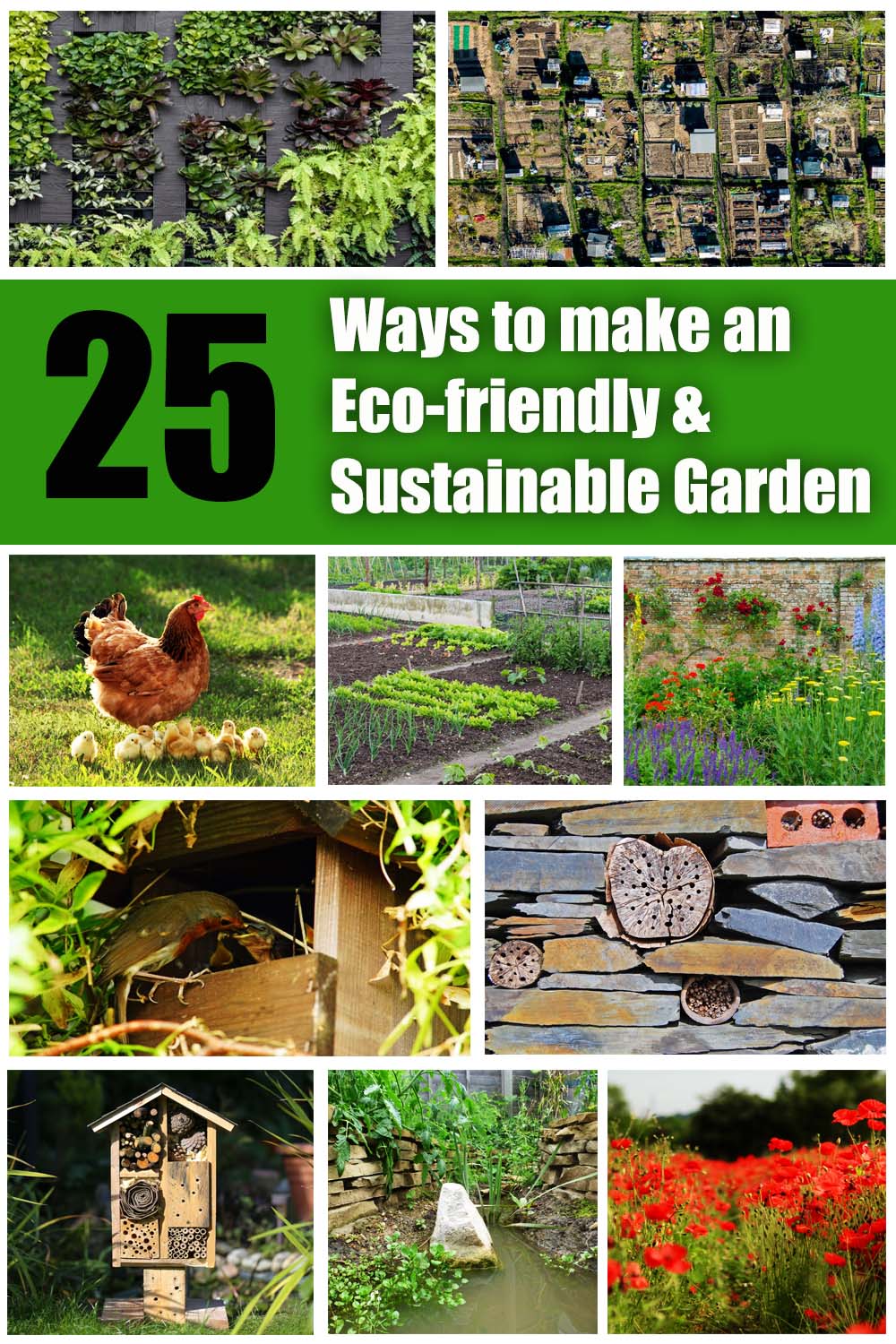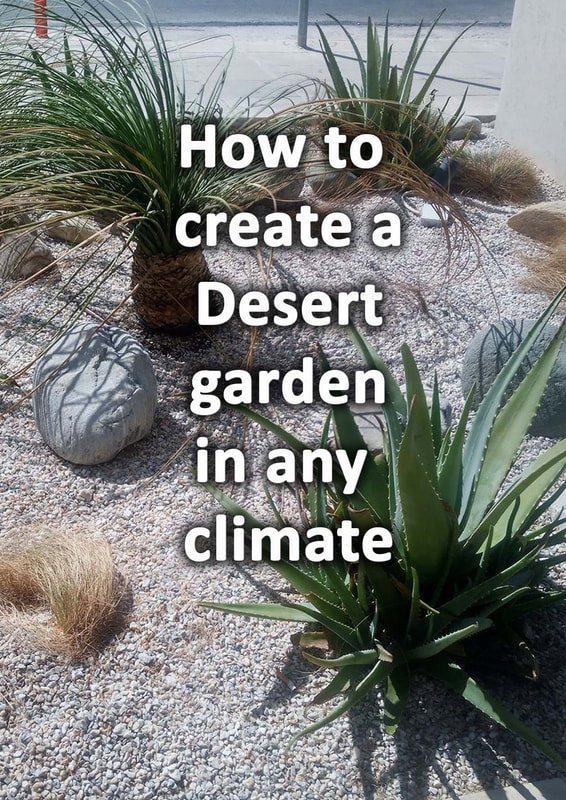|
This article contains affiliate links
In an increasingly eco-conscious world it is not just our energy sources and transportation which has been brought into question. Our gardens and landscapes are also being scrutinised as vehicles to reaching a more sustainable future.
I have long suggested that our negative impact upon the planet is more of a landscape issue than anything else. A great dependency upon fossil fuels, mechanised agriculture and distant supply chains all reinforce this concept. Modern landscapes are highly managed and energy hungry operations. Vast deserts of lawn covered public spaces with highly hybridised, high maintenance, planting displays.
Such landscaping often requires large amounts of irrigation, energy and labour. 'Xeriscaping' is increasingly being put forward as a much more sustainable way to create and maintain landscapes.
Such landscaping focuses upon low input approaches using less while giving more to a sustainable future. Xeriscaping can not only reduce water consumption but also compliment sustainable architecture and boost biodiversity. In this article I will aim to summarise this innovative landscaping concept while breaking down all of its elements, and benefits. What is Xeriscaping?
Xeriscaping is a method of landscape design and construction which reduces water consumption and the need for irrigation. However, Xeriscaping is not just restricted to conserving water but also having a lower impact in general.
This means creating landscapes which require less energy input, maintenance, pesticides and herbicides. This has brought Xeriscaping firmly in line with more sustainable and eco-friendly landscaping practices. It is very common for Xeriscaping landscapes to also include native plants and wildlife habitats.
By its very nature Xeriscaping reduces the water consumption and encourages landscaping which is low maintenance, cost effective and better for the environment.
Why is Xeriscaping important?
Xeriscaping is important because it conserves water, reduces energy consumption, and the need for chemical applications into the landscape. Chemical fertilisers, herbicides and pesticides can escape into the wider landscape causing environmental damage.
Xeriscaping also reduces high maintenance landscape elements such as lawns and hedging. This reduces the need for intensive cutting regimes which help to eliminate emissions from combustion engines. By reducing such inputs and conserving fresh water Xcerscaping is helping to reduce human impacts upon the environment. This helps to reduce global threats of biodiversity loss, toxification, climate change and fossil fuel consumption. Understanding Xeriscaping
Many Xeriscaping projects are associated with hotter, dry, climates such California or the Mediterranean. Consequently, many assume that Xeriscaping is a type of desert garden or dry garden.
This is simply because many Xeriscaping gardens are focused within climates where preserving water is more important. However, even countries with high annual rainfall such as the UK are seeing a growing enthusiasm for Xeriscaping! As mentioned previously, landscapes which require less water also require less, mowing, weeding and hedge cutting than those that do.
Therefore, even within wetter climates a combination of species selection and hard landscaping can create less intensive landscapes. These can look naturalistic whilst contemporary and also be good for the environment.
Planting schemes specify more natives and drought resistant species with a focus upon perennials. Perennials require less maintenance as they come up every year. Water conservation
One of the most fundamental elements of Xeriscaping is to conserve as much water as possible. Some of the best ways to conserve water is by implementing rain water harvesting techniques. The simplest way of doing this is by installing water butts to roof gutters.
For more intensive systems gutters and patio drainage systems can be channelled into underground storage tanks. These can be tapped into via a pump during hot and dry summers for sustainable landscape irrigation. Areas of hard standing can also be designed to fall towards planting areas to reduce the need for extra irrigation. Native & Drought tolerant planting
Even if you live within a region with high annual rainfall summers can still become susceptible to drought. This can lead to dry, cracked, soil and dying plants. However with careful plant selection you can mitigate most of these threats.
By choosing native plants and wildflowers endemic to your area you can reduce the impact o drought. These plants are adapted to your regional weather and soil type requiring less irrigation and care. Many native wildflowers and meadow species are also accustomed to poor soil and midsummer droughts. Alternatively, you may choose a landscape theme that naturally uses dry loving plants such as Mediterranean and Succulent gardens. Soil improvement & Mulching
One of the reasons modern landscaping suffers from periods of drought is poor quality soil. Many topsoil’s used today are from landscape suppliers who mix up their own topsoil loams and blends.
These are normally a combination of compost, fine sands and waste sub-soil from excavations. The problem with such topsoil is it has not had enough time to build up its own ecology. The billions of tiny bacteria, fungi, invertebrates and insects which make up soil is very complex.
Soils with low levels of soil ecology usually leach nutrients and dry out faster in times of drought. Consequently, it is advantageous to dig in plenty of organic matter into your soil and mulch regularly.
Mulching will help to protect soil from moisture loss and help to feed and encourage soil life. Efficient irrigation techniques
Not all gardens will require the installation of irrigation systems. However gardens in particularly hot and dry climates may have to rely upon them during exceptionally dry periods.
If you do have irrigation systems make sure they are programmed to be as efficient as possible. This could involve irrigating at night to prevent as much water evaporation as possible. It is also efficient to employ irrigation systems which deliver water under the soils surface. This also prevents evaporation during hot weather. Lawn alternatives
Although lawns are one of the most pleasant looking and functional outdoor surfaces they are not always practical. Unless you live in a cool climate with high levels of rainfall lawns can require a lot of irrigation.
If not lawns can become dry and die off during the summer when they are most needed. Whether you live in a cool climate or not lawns can require intensive maintenance. This can take up valuable time and the use of expensive energy. In an Xeriscaping scheme you may wish to consider lawn alternatives such as gravels. Materials for Xeriscaping
Paving
Conventional thoughts on suitable paving for Xeriscaping would suggest permeable paving is best. However I would say impermeable paving with a sustainable drainage strategy is best.
Permeable paving will simply allow water to seep through into the soil below. However, impermeable paving can direct water into flower borders to help irrigate plants. Alternatively surface water can be collected within channel drains and directed to a storage vessel for later use. From a sustainability point of view I would suggest using a locally sourced natural stone with robust installation. Gravels
Many Xeriscaping projects prefer not to install lawns as they can require extra irrigation during summer.
Consequently gravels can act as a satisfactory substitute for lawns and provide multifunctional surfaces. Gravel is especially effective in Xeriscaping projects with a desert or Mediterranean theme. Although brightly coloured, gravel can increase solar reflection and increase the urban heat island effect. In hot climates this could increase the need for irrigation than reduce it. Mulches
Mulches can play a crucial role within Xeriscaping projects and especially those trying to reduce heat island effects. Organic mulches such as ornamental bark, leaf mould and wood chip create a protective layer over soil.
As they degrade they can invigorate soil ecosystems and lead to healthier soil. Having a covering of organic material also helps soil to retain moisture during dry weather. This reduces the need for irrigation and keeps the soil at a stable temperature. Such mulches also help to prevent the establishment of weeds leading to less maintenance and herbicide use. Rocks
Although not an essential element of every Xeriscaping project rocks do provide both functional and aesthetic benefits.
Rocks can be effective at creating naturalistic rain gardens which absorb and collect excess surface water. Rocks also lend themselves to the theme of dry, arid, landscaping which requires less irrigation. Landscaping such as alpine rockeries and dry succulent gardens are a great way to implement rocks into Xeriscaping. Walling
Every type of landscaping will require retaining features, level changes, terracing and raised topography.
Xeriscaping is no different and walling provides the perfect opportunity to add aesthetics and function to your design. Walls can be utilised to divert surface water, create raised beds and enhance microclimates. Natural stone walling such as dry stone walls and gabions naturally lend themselves to a dry garden theme. These are perfect for Mediterranean and dry Xeriscaping design themes. Planting for Xeriscaping
Native plants
Native plants are naturally adapted to a specific localities climate and soil conditions. This means they are less likely to require extra care and irrigation making them perfect for Xeriscaping.
Perennials
Perennials re-grow from the ground every growing season from deep roots, rhizomes and bulbs. These plants have ample water and food stored within their root structures making them more robust. Perennials are much more drought resistant than annuals and require much less maintenance.
Bulbs
Like perennials bulbs typically come up once a year for a limited amount of time. They also have energy and water stored within their bulbs making them less affected by extremes of weather. They also bring lots of seasonal interest to Xeriscaping landscaping projects.
Meadows
Meadows are wild grasslands which contain many robust wildflowers and hardy grass species. Meadows are fantastic for Xeriscaping as they do not require as much water as conventional lawns. These rich tapestries grow fast early on in the season and burst into bloom throughout the summer season. They are also fantastic for many species of wildlife!
Mediterranean plants
Mediterranean plants naturally come from places with hot summers and low rainfall. It is no surprise that the Mediterranean theme is so embraced within Xeriscaping. Dry Mediterranean gardens are often the perfect garden themes for low water consumption and reduced maintenance.
Succulents
Succulents are loved for their architectural shapes and interesting forms. These very attractive plants are extremely drought tolerant and low maintenance by nature. This makes outdoor succulent gardens the perfect accompaniment to Xeriscaping projects.
Alpines
Alpines are drought resistant plants native to cold and mountainous parts of the world. These plants have evolved to thrive in exposed locations in rocky soil. They are adapted to dry conditions and also perfect for Xeriscaping projects. These typically work well in raised Alpine rockeries with large builders and gravel beds.
Designing for sustainability
In recent times the idea of Xeriscaping has become a rather vogue and popular garden trend. Even popular gardening programs are now talking a lot about drought resistant plants and dry garden planting design.
However, it is important to remember that there is much more to sustainable landscaping than just saving water. I often say to my clients 'if you want a garden good for the planet you must take a holistic approach'.
Designing for sustainability must include other benefits including; biodiversity, soil ecology, sustainable drainage, sustainable functionality with buildings, energy production, food production, organic recycling and eco therapy.
If you are excited about the benefits of Xeriscaping great! However, if it is a more sustainable and eco friendly landscape you seek Xeriscaping is only a small first step! Final thoughts
During my last year training as a Landscape Architect my dissertation focused upon Ecological design within Landscape architecture. I sincerely believe many problems faced today within the built environment can be solved with more sustainable landscapes. Whether reducing water consumption, improving mental health or teaching new skills, sustainable landscaping is the key to improving society.
Xeriscaping & sustainable landscaping services
If you require sustainable landscape design or eco landscaping services please do not hesitate to contact me.
As well as sustainable landscaping we also offer all conventional landscaping services including; paving, fencing, driveways, patios, planting, drainage, new lawns, clearances and gravel installation. Based in Amersham we cover most of Buckinghamshire including Hertfordshire, Oxfordshire and local regions of Amersham, Aylesbury, Beaconsfield, Chesham, Chalfont Great Missenden, Gerrards cross, High Wycombe & Tring. Why not watch a a video of some of our latest landscaping projects below?
'As an Amazon associate I earn from qualifying purchases'
0 Comments
Leave a Reply. |
The Author
|
Landscaping services across Buckinghamshire, Amersham, Aylesbury & High Wycombe
Hyde Heath, Amersham, Buckinghamshire |
|
